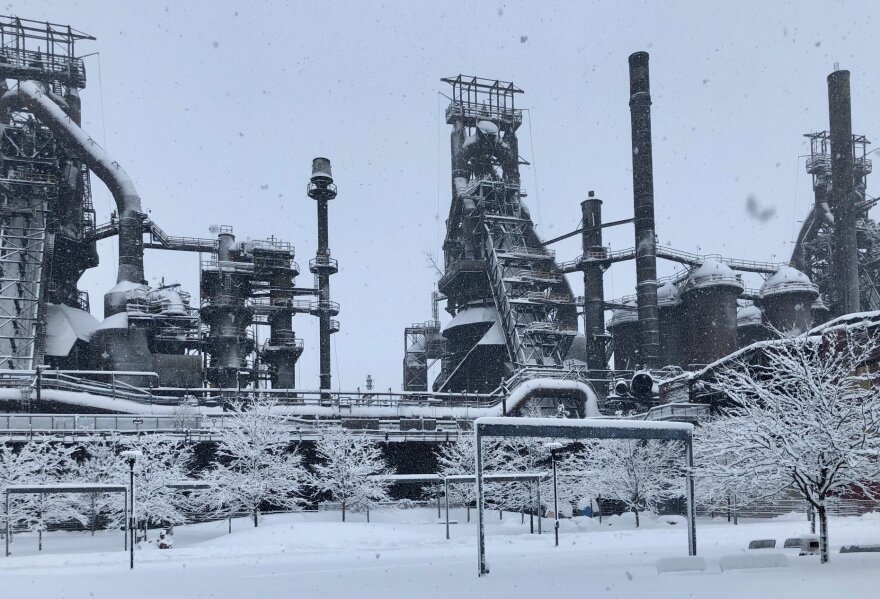BETHLEHEM, Pa. — A warming trend is coming to the Lehigh Valley after Winter Storm Elliot tore through the Northeast last week, which led to power outages and other damage in the valley.
But while the worst of the weather seems behind us, area plumbers say the hard freeze and temperature shifts caused a lot of homes' plumbing and water to be disrupted by frozen or burst pipes.
- Power has been restored to all PPL customers impacted by outages from Winter Storm Elliot
- Many residents also were impacted by plumbing challenges due to frozen or burst pipes
- Gusts and temperatures reached severe levels throughout the holiday weekend, but New Year's looks to warm up
White Christmas may now turn into a wet New Year, as the current forecast for the New Year's Eve weekend is one of chance showers and estimated highs even reaching above 50 degrees.
Cold, a bigger problem than snow
As cities further north, such as Buffalo, New York, continue to face challenges from snowfall, weather in the Lehigh Valley, including reaching a record cold for Christmas Eve, was more worrisome from temperature.
Michael Lee, a meteorologist with the National Weather Service, said snowfall was not that much overall throughout the Lehigh Valley, with Lehigh County getting only 0.4 inches of snow overall alongside nearly 2 inches of rain from Thursday into Friday.
"It really wasn't much of a snowmaker," Lee said. "It was definitely all about the cold and it was all about the wind chill."
He said the region saw wind gusts from 30 to 50 miles per hour throughout the storm, and the temperature swings alongside it were significant.
"On Friday, for Allentown, we recorded a maximum temperature of 57 degrees at 4 a.m. And then when that front moved through by 4 p.m., we dropped down to minimum temperature 15 degrees," Lee said.
"And then by midnight, the low temperature was 4. So that's nearly a 50-degree swing in less than 24 hours."
At least 63 people nationwide were killed by the blizzard.
Power and plumbing problems
According to regional electric utility provider PPL, power had to be restored for more than 102,000 customers.
Jane George, regional affairs manager for PPL, said all outages related to the winter storm have been restored.
"Every part of our service territory was impacted by the storm," George said. "We prepare year-round by maintaining our delivery systems and making upgrades so that we're ready for when a storm like the one over this past holiday occurs."
Thousands of customers for First Energy, another regional service provider, also were without power because of the storm.
George said more than 2,000 utility workers for the company were on the clock to support restoration efforts throughout the storm.
Joe Mrochko, vice president of inside operations and marketing with Schuler Service Inc. in Allentown, said the hard freeze and temperature shifts caused a lot of homes' plumbing and water to be disrupted by frozen or burst pipes.
He said Schuler received hundreds of calls throughout the storm of people looking for help.
"We had very busy last four days," Mrochko said. "Our guys were working long, long hours when normally what you want to be is with your family. So we're really proud of our guys. They sacrificed a lot of their own personal time to try to help people get pulled again."
He said in these conditions, if you have areas reactive to cold temperatures, consider leaving faucets on a slow drip, ensuring pipes in outside walls are insulated, and considering opening some cabinets to ensure indoor heat reaches piping.
"If you if you believe that you're you're currently experiencing frozen pipe, the best thing to do is to turn the water off to the home, the main channels, so that you can work you can isolate that area they believe is suspect," Mrochko said.
"And then call a plumber to assess the situation and try to get things handled."


